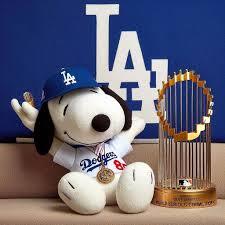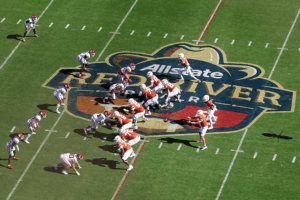
“One Swing. One City. One Unforgettable Moment.”
In the world of sports, there are moments that transcend the game itself. These are the moments that define a season, a career, and sometimes even a city. The unforgettable swings of the bat, the last-second buzzer beaters, the game-winning touchdowns; they all serve as the heartbeat of sports culture, creating memories that fans carry with them for a lifetime. “One swing. One city. One unforgettable moment” encapsulates the essence of these moments—those rare, electric, and transformative instances where an athlete’s actions change the course of history and etch their name into the annals of sports lore. But perhaps even more poignantly, it highlights how one event can transform an entire city, its residents, and its collective spirit.
This phrase is evocative of an iconic moment in sports history, one where a single action, often in the blink of an eye, holds the power to reshape a narrative, elevate a legacy, and unite a community. It’s about more than the sport itself—it’s about how sports weave into the fabric of a city’s identity, creating shared experiences that are remembered and celebrated for generations to come.
The Moment That Defines a Career
To understand the weight of the phrase, we need to look at examples from various sports where “one swing” changed everything. Perhaps one of the most famous moments in baseball history comes from a man who is synonymous with unforgettable swings—Babe Ruth. Ruth’s iconic called shot in the 1932 World Series is one of those legendary moments that has been passed down through the generations.
The moment is etched in the minds of baseball fans, not just for the sheer audacity of Ruth’s act—pointing to the outfield before smashing a home run—but for its historical context. The New York Yankees were already dominant, and Ruth was at the peak of his powers. Yet, Ruth’s decision to publicly call his shot and follow through with it amplified his larger-than-life persona. It wasn’t just the home run that made the moment unforgettable; it was the story it told about Ruth’s confidence, his ability to elevate a moment to mythic status, and how his one swing created a sense of magic that still lingers around the game of baseball.
But it’s not just about those larger-than-life athletes; sometimes, the power of one swing transcends the greatness of the athlete and shifts the trajectory of an entire franchise. Take, for example, Kirk Gibson’s famous walk-off home run during Game 1 of the 1988 World Series. At the time, Gibson was dealing with injuries that seemed to make it improbable for him to even take the field, let alone hit a home run off one of the best relief pitchers of the time, Dennis Eckersley.
The image of Gibson limping around the bases, fist pumping in defiance of his injuries, is as iconic as any in MLB history. It was more than just a moment of individual brilliance—it was a victory for the underdog, a triumph of willpower over physical limitation. That single swing from Gibson not only set the tone for the Dodgers’ eventual World Series win, but it also immortalized him in the hearts of a generation of fans. The moment was not just about the baseball; it was about the spirit of a city, its fans rallying behind a player who defied expectations in the most dramatic way possible.
The City and Its Unifying Power
The phrase “One city” brings into focus the idea that sports, while inherently individual in some ways, have an undeniable ability to bring a community together. A city’s connection to its team, the shared experience of highs and lows, and the collective identity formed through sporting achievements are what truly define the bond between a team and its fanbase.
Consider the case of the Chicago Cubs and their eventual victory in the 2016 World Series. For over a century, the Cubs had been waiting for their moment. Fans of the Cubs had experienced heartbreak after heartbreak, but the city of Chicago’s loyalty to its team never wavered. Then, in the 2016 World Series, the Cubs faced off against the Cleveland Indians in a dramatic, back-and-forth series that would go down in history. In Game 7, with the series tied 3-3, a rain delay added even more drama to an already tension-filled game. When the game resumed, it was clear that the Cubs had to make history or face the possibility of another year of disappointment.
When Ben Zobrist hit the go-ahead double, and Miguel Montero added an insurance run, the city of Chicago erupted into an emotional release that had been decades in the making. But it wasn’t just the victory on the field—it was the culmination of an entire city’s enduring belief in the Cubs. That victory was as much about the thousands of fans who had suffered through years of failure as it was about the players who had delivered the win. In one moment, one swing, the city of Chicago was united in an outpouring of joy that would not soon be forgotten.
The power of sports to transform a city’s identity is also evident in New York City. The Yankees, with their immense history of success, are a symbol of both the city and its broader cultural significance. Yet, it was not always this way. The team’s transition from the Bronx Zoo years of chaos to their later dominance was marked by key moments that resonated with both the team and the people who call New York home. When Derek Jeter, the quintessential Yankee captain, hit his first-ever home run in the postseason during the 1996 American League Championship Series, it was a symbolic moment for the city. Jeter was more than just a player; he was the embodiment of New York’s competitive spirit, a city that thrives on overcoming adversity and achieving greatness. That one swing became an anchor point for a new era in Yankees history, a time when the team would go on to claim multiple championships and cement their place in baseball lore.
The Unforgettable Nature of the Moment
“One unforgettable moment” speaks to the lasting power that a single event can have in sports. A moment can live on in fans’ memories, be immortalized in highlight reels, and be passed down through generations. These moments don’t simply fade away; they become part of the fabric of sports history.
Take, for example, the “Immaculate Reception” in the NFL—a single play that has become the stuff of legend. Franco Harris, the Pittsburgh Steelers’ running back, caught a deflected pass and ran it into the end zone, creating one of the most iconic plays in NFL history. The play occurred during the AFC Divisional Playoffs in 1972 and helped the Steelers secure their first-ever postseason win. To this day, it is the play that is synonymous with the Steelers’ rise to dominance in the 1970s.
Similarly, Michael Jordan’s “Flu Game” during the 1997 NBA Finals is another instance where a single moment—Jordan battling through illness to lead the Chicago Bulls to a crucial victory—has become etched in sports history. Jordan’s legendary status only grew as fans saw him overcome incredible odds to achieve greatness. The image of him hunched over in exhaustion, giving every ounce of effort to help his team win, serves as a symbol of his unparalleled competitiveness. One game, one performance, one unforgettable moment that made an entire city proud and further solidified Jordan’s place in basketball lore.
The Emotional Impact on Fans
The emotional impact of these unforgettable moments is perhaps the most profound aspect of what they represent. For fans, these moments often serve as catharsis, a release of pent-up emotion that has been building for years. Fans invest not just their time but their heart and soul into following their teams. These swings, these last-second shots, these game-winning touchdowns aren’t just plays—they’re the manifestation of every fan’s hope, disappointment, joy, and pain that they’ve experienced over the course of a season, a career, or even a lifetime.
For the city of Cleveland, the moment when LeBron James led the Cavaliers to the NBA Championship in 2016 was not just a basketball victory. It was the culmination of years of heartbreak for Cleveland sports fans. The Cavaliers’ victory in the NBA Finals, after coming back from a 3-1 deficit, was more than just a championship—it was a chance to rewrite the city’s sports narrative, a moment of redemption that would forever be remembered by fans who had suffered years of frustration. One player’s effort, one moment in time, completely reshaped the identity of a city, giving Cleveland its first major sports championship in over 50 years.
The Power of One Swing, One City, One Moment
“One swing. One city. One unforgettable moment” is not just a phrase. It’s a celebration of the power of sports to impact lives, transform identities, and create stories that are told for generations. Whether it’s Babe Ruth’s called shot, Kirk Gibson’s walk-off home run, or LeBron James delivering Cleveland’s first NBA championship, these moments have the power to transcend the game itself. They become part of the collective memory of fans and the fabric of the cities they represent.
One swing can change the course of a game, a season, or a franchise’s history. One city can rally around that moment, with fans sharing in the joy and pride of their team’s success. And that moment, whether celebrated in the immediate aftermath or relived through the years, becomes unforgettable—a symbol of excellence, resilience, and the beauty of sports.
These are the moments we remember not just for what they were, but for what they represent—the thrill of victory, the pain of defeat, and the shared experiences that bring us together, reminding us of the power of sports to shape our world.




